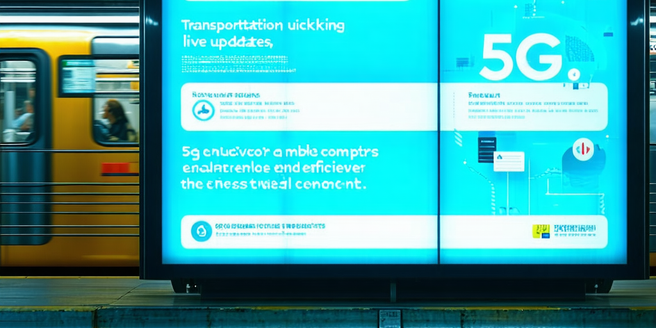5g Networks Revolutionizing Connectivity

Understanding the Basics of 5G Technology
5G technology represents the fifth generation of mobile networks. It builds upon previous generations by providing substantially higher data speeds and improved reliability. Unlike its predecessors, 5G uses a wider range of frequencies which allows more data to be transferred simultaneously. This is achieved using advanced antenna technology and increased spectrum efficiency. Beyond just faster networks, 5G supports a higher density of devices and lower latency, making it ideal for supporting a wide array of applications. From autonomous vehicles to remote-controlled drones, 5G sets the framework for futuristic, fully-connected environments. Although its deployment is still ongoing, especially in rural areas, the basics of 5G technology promise significant improvements in how we connect and interact with our devices daily.
How 5G Networks Enhance Internet Speeds
One of the standout features of 5G networks is their ability to dramatically enhance internet speeds. By utilizing higher frequency bands, 5G networks can deliver speeds that are several times faster than 4G LTE, achieving peak speeds of up to 10 Gbps. This improvement is partly due to the use of small cells and massive MIMO (multiple input, multiple output) technology, which increases capacity and efficiency. Users can download movies in seconds and experience near-instant loading times for websites and applications. Additionally, 5G reduces latency to a mere few milliseconds, supporting real-time interactions. This leap in performance has transformative implications for industries reliant on data transmission and delivery, such as media streaming, gaming, and virtual reality. The faster speeds ensure seamless access and richer user experiences.
Impact of 5G on Smart Cities and IoT
5G’s transformative potential is best exemplified in the evolution of smart cities and the Internet of Things (IoT). By providing a robust network infrastructure, 5G enables the massive interconnection of devices, leading to smarter urban environments. Smart cities leverage 5G to efficiently manage resources like energy, water, and waste by utilizing real-time data analytics gathered from IoT devices. For instance, 5G supports everything from autonomous vehicles to smart grids and intelligent traffic systems, which work together to reduce congestion and pollution. The low latency of 5G ensures that IoT devices can communicate effectively, providing valuable information that cities can use to enhance public services and quality of life. This innovation heralds a future where urban areas are more responsive, sustainable, and efficient.
5G and Its Role in Transforming Industries
5G is poised to revolutionize various industries through its advanced capabilities. In healthcare, 5G supports telemedicine by providing reliable, high-speed connections necessary for remote consultations and real-time monitoring. The manufacturing industry stands to gain remarkably from 5G with the integration of smart machinery and automation, leading to more efficient production lines. In media and entertainment, 5G facilitates next-level content streaming and augmented reality experiences. Furthermore, the transportation sector benefits from 5G through technologies like vehicle-to-everything communication, enhancing safety and traffic management. Enhanced network capabilities also support critical infrastructure and emergency services, ensuring swift responses during crises. By acting as a catalyst for innovation and efficiency across sectors, 5G is essential for the next wave of industrial transformation.
Challenges and Future Prospects of 5G Networks
Despite its potential, the rollout of 5G networks faces several challenges. High implementation costs, spectrum allocation issues, and regulatory hurdles must be addressed for wider deployment. Additionally, the infrastructure for 5G, which involves many small cells and antennas, can be challenging to establish in densely populated areas. There are also concerns about cybersecurity as an increased number of connected devices opens up potential vulnerabilities. However, the future prospects of 5G look promising as technology continues to evolve. Research is ongoing to improve 5G technology further, including advances in battery efficiency and network coverage. As these challenges are gradually overcome, 5G networks are expected to play a pivotal role in enabling emerging technologies like AI, autonomous systems, and comprehensive IoT solutions.